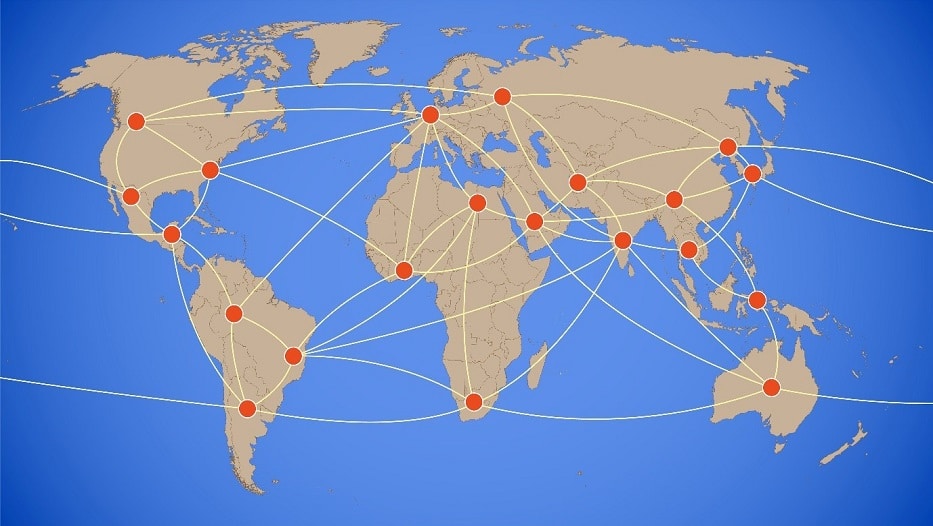Adán Cubillo Hurtado | 01/04/2022
In an increasingly digitized world, the connections that underpin this technology have become a map of the economic development of regions. At present, 99% of telecommunications use submarine cables, main Internet arteries, and global connectivity. Noelia Miranda, supervisor of Technical Development and Training at the Colegio Oficial de Ingenieros de Telecomunicación (COIT [Official College of Telecommunications Engineers]), outlines the main existing links and reveals the challenges and opportunities the industry faces.
As revealed in recent years, the role of submarine cables in the organization of terrestrial telecommunications is not only crucial, but determining. Ninety-nine percent of the connections are based on these hidden infrastructures under the ocean, which cross the planet in its entirety. As Noelia Miranda, supervisor of Technical Development and Training at the Colegio Oficial de Ingenieros de Telecomunicación (COIT [Official College of Telecommunications Engineers]), explains, they are the main arteries of the Internet and worldwide connectivity, and they transmit large amounts of data from companies, users, and administrations quickly from one point to another.
The drawing outlined by these cables not only shows how information travels, but also forms a map indicating the flows of economic power between different continents. “Africa is one of the least connected areas. It is interesting to see that, in many cases, the routes cargo ships use for carrying goods are followed. One of the areas where submarine cables proliferate is in the area between Singapore and Japan, crossing through Taiwan, Indonesia, Korea, the Philippines, and China. This is the area most traveled by these ships, which carry goods from African factories. In Europe, the east coast of the United Kingdom has over a dozen cables through which most of the information travels from the United States,” Miranda explains.
These underwater connections are essential to society as they are a foundation for global activity and the global economy, and a sudden halt of their service could lead to a state of emergency. But is this paralysis possible? “It seems unlikely, except in the event of a worldwide catastrophe. However, small-scale outages in some submarine cables have occurred over the years, as in the 2006 Taiwan earthquake, which affected communications in China and other nearby countries,” the expert said.
Extensive growing infrastructure
Today, more than 436 fiber optic cables are operating under international waters, reaching a total length of about 808,000 miles. According to Equinix’s annual global interconnection index (GXI), Latin America will be the region with the highest interconnection bandwidth capacity in the coming years, with a compound annual growth rate (CAGR) of 50% between 2019 and 2023. This growth is driven by unstoppable technological circumstances with factors highlighted by Noelia Miranda. “The increase in devices with connectivity, an increasingly digital economy based on data, and the amount of information we access—and share. This is a clearly expanding market, as shown by the Research and Markets report “Submarine Optical Fiber Cables,” which points out that the global market will reach 30.8 billion by 2026, growing at an annual rate of 14.3%.”
As an example of this growth, the COIT tells us about 2Africa, which will cover about 23,000 miles and connect Europe—through Catalonia—with Asia, the Middle East, and Africa. This project, funded by Facebook and several telecommunications companies, shows the future of the industry in both its planning and its execution, and it is part of the milestones that define its development. “I would highlight these new investors, such as Facebook, Amazon, and Google, in addition to the geopolitical aspects associated with the routes and their protection,” she explains. The entry of major technology companies has been decisive. “2016 has been a year that has marked the growth of the submarine cable industry. Until then, they were owned by private companies, mostly telecommunications companies. This has led to the arrival of major tech companies, although some had already started, like Google, to control their dependence on operators and ensure certain quality in access to their content. These companies have a powerful investment muscle that allows them to take on this type of projects,” she says.
The positioning of submarine technology, far above satellite technology, is based on three variables: cost, capacity, and latency. “Putting a satellite into orbit and maintaining it implies a much higher investment. The transmission capacity of the cables is much higher. Regarding latency, satellite communication is much slower since the signal has to travel 22,400 miles from Earth, back to an antenna on Earth, and then follow its usual route to the web or service required at the time. Cables are also less sensitive to weather conditions. However, an earthquake or tsunami affects their communication,” explains Noelia Miranda.
These cables can be in operation for around 25 years, although their activity is usually determined by profitability and the end of their economic life arrives first. “Cable maintenance represents a fixed cost that sometimes cannot compete with a cable with larger capacity and a similar route. That is, we can find cables that can still be operational but that are turned off because it doesn’t make financial sense to keep them,” explains the expert. The processes of replacing obsolete cables consist of recovering them by raising them up, which is done with large ships with the capacity to store thousands of kilometers and withstand the pressure and tension generated by the different maneuvers that need to be carried out. There are few recovery processes underway at present, and they are mainly due to environmental initiatives. “This is a planning and operation process that, just like the installation, takes a couple of years. On the other hand, there is some controversy about whether the removal itself affects the environment more than leaving the cables on the seabed,” Noelia Miranda points out.
Within this framework of innovation and a certain need for communication, the future of the industry will face many coupling challenges, but a sure path of growth. “In the hyperconnected world we live in, what is clear is that more and more powerful infrastructures are going to be needed to support more transport speed and low latency, so it is expected to be an upward trending market,” concludes COIT Technical Development and Training supervisor.
Article Collaborator:
 Noelia Miranda Santos graduated as a Telecommunications Engineer from the Technical University of Madrid, and she is supervisor of Technical Development and Training at the Colegio Oficial de Ingenieros de Telecomunicación (COIT [Official College of Telecommunications Engineers]). Her professional experience focuses on the study of technological solutions used in telecommunications and the economic and regulatory policy aspects of telecommunications.
Noelia Miranda Santos graduated as a Telecommunications Engineer from the Technical University of Madrid, and she is supervisor of Technical Development and Training at the Colegio Oficial de Ingenieros de Telecomunicación (COIT [Official College of Telecommunications Engineers]). Her professional experience focuses on the study of technological solutions used in telecommunications and the economic and regulatory policy aspects of telecommunications.
She is the Technical Secretary of the Regulation and Public Policies Group of the COIT, as well as a member and representative of the institution in multiple forums in the telecommunications and ICT industry.
As a representative of the COIT, she has participated and cowritten publications, articles, and papers in magazines, workshops, and conferences. She has specific training in project management and coordination and also stands out for the development of new services and the identification and exploration of new professional opportunities for Telecommunications Engineers.





